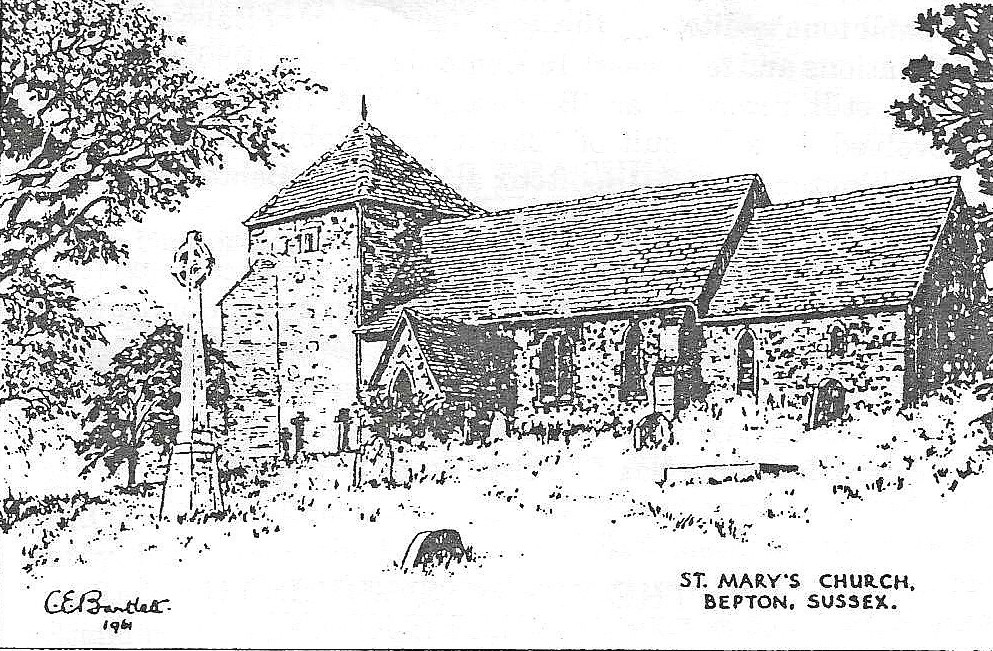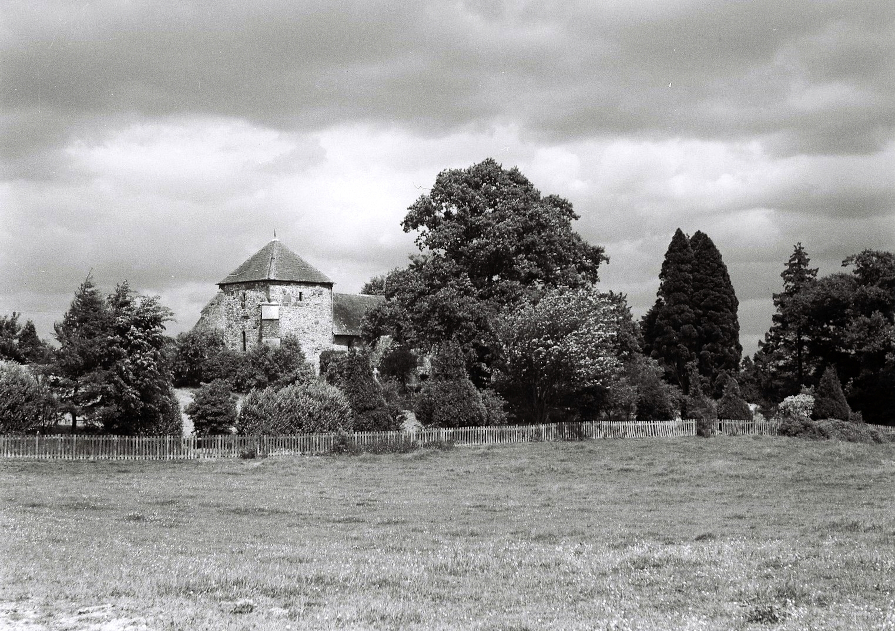
Saxon Origins
In about 480 A.D. a Saxon named Babo came here over the Downs. Having driven out the Celtic inhabitants, he called his settlement ‘Babintone’ – – literally the ‘tone’ (enclosure) of Babo and his ‘inges’ (relations and followers). In 1086, according to the Domesday Book, the settlement was still recorded as ‘Babintone’, but the spelling gradually evolved: in 1236 to ‘Babinton’; in 1241 to Bebbington; in 1296 ‘Bebiton’ and in 1525 ‘Bebton alias Bebiton’. Today’s name ‘Bepton’ is first recorded in 1567.
In 700 A.D. St Wilfrid’s Christian community came up from their settlement at Selsea and built a wooden church on this site, dedicated to St. Mary, the Mother of Jesus, and the existence of this Saxon wooden church is recorded in the Domesday Book. Wooden churches were prone to all types of rot and the risk of fire and no trace of that church remains, having been replaced by the present building.
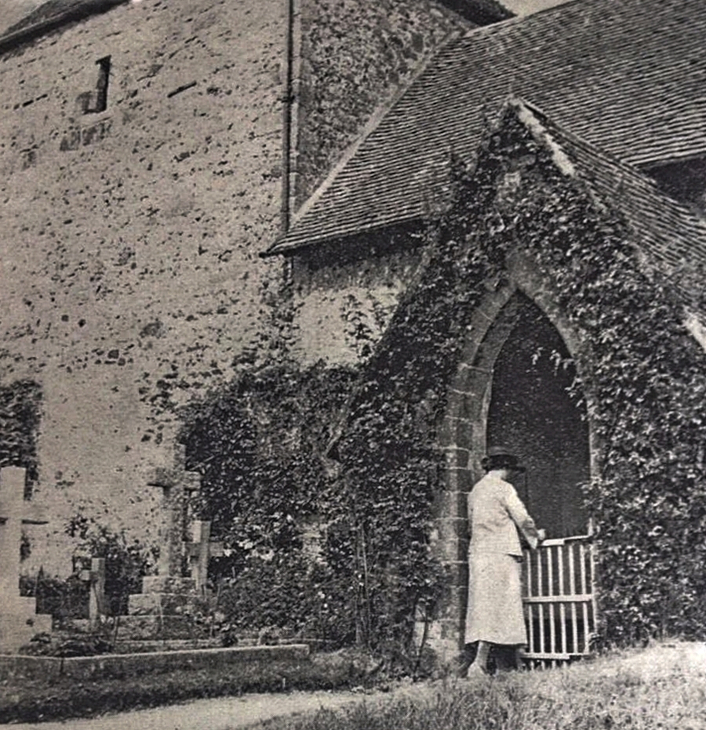
Circa 1939
The Present Building
The round arches of the South and West doors are part of the original building, but the pointed arch and the lancet windows of the North and South Walls date from the 13th Century.
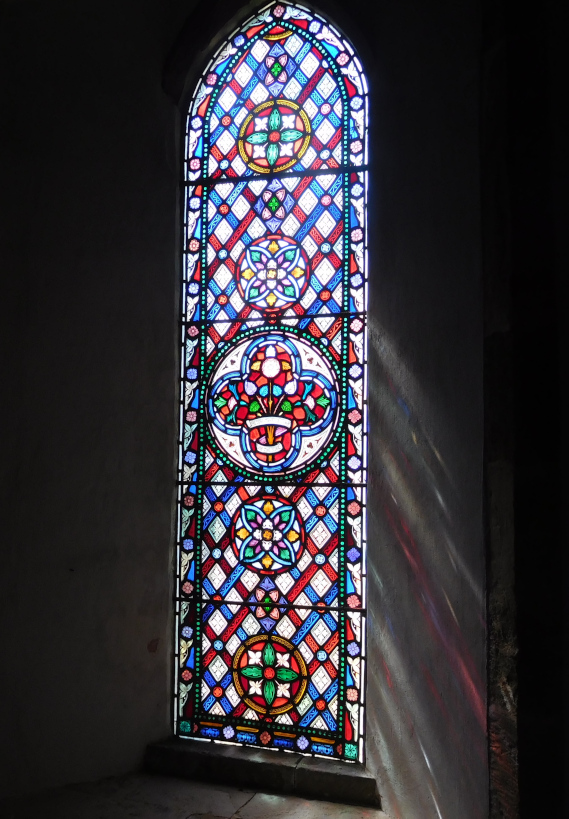
The church today would look very different to its 13th century congregation. In their day it would have been darker and there would have been no pews. The open space would have been used for meetings and celebrations, much as a village hall is today. Equally, the churchyard with few gravestones or monuments, would have been a gathering place for village events.
Little changed until 1878, when a number of alterations were made: The chancel was rebuilt and the floor raised in steps. The vestry was added, with entry through the North wall of the Chancel. The narrow, round Chancel arch was widened and rebuilt. The Chancel ceiling was removed to reveal the beams and the present stained-deal vaulting put up to match the Nave. A small, 12th Century window in the North Wall of the Chancel and two altar recesses in the Norman Chancel arch were lost.
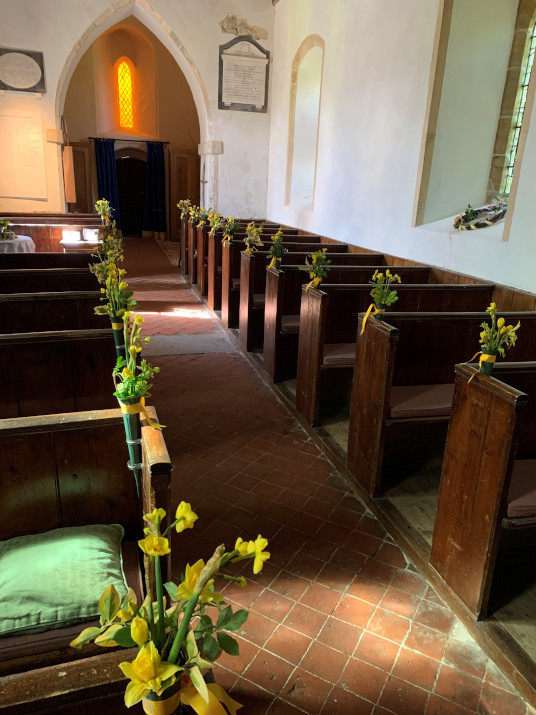
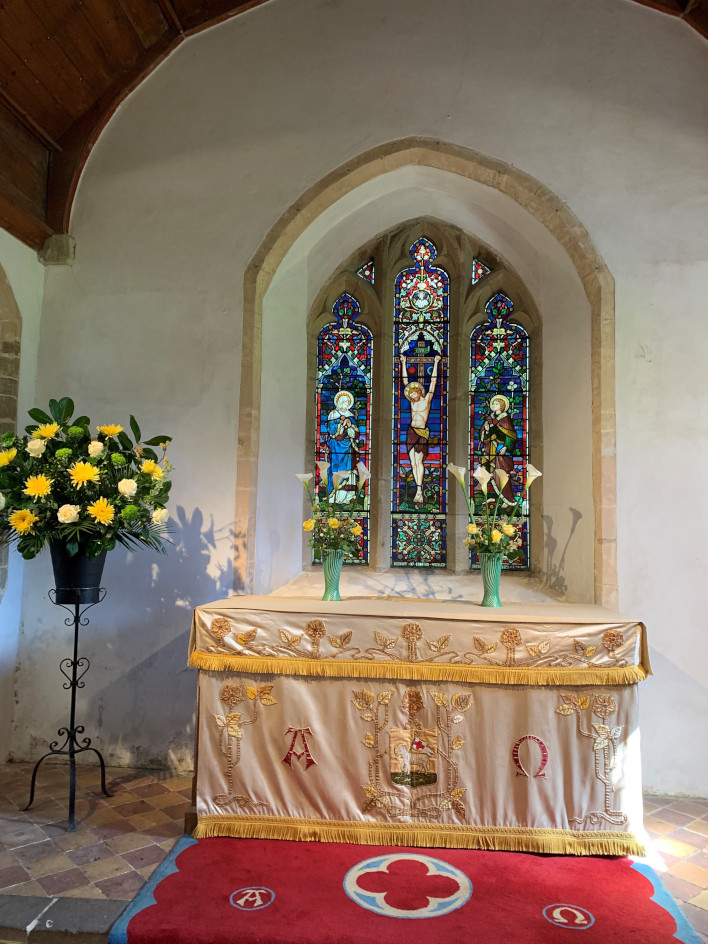
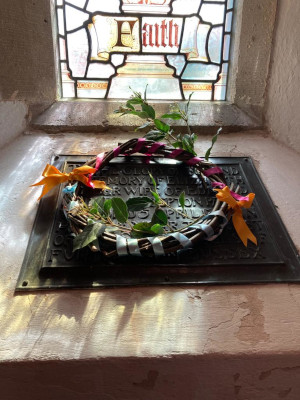
Interior Features
The Easter Sepulchre – a niche or subsidiary altar in the North wall of the Chancel, to the right of the vestry door, is of ‘Transitional’ design and dates from early in the 14th Century. Along its base is an inscription in Norman French, using a mixture of Roman and Lombardian script, with some abbreviation. This has been deciphered as ‘RADO.DE.LA.HEDOL.GIT.ICI.DEV.LY.RNDE.MERCIE.RICHE’. “Rado de la Hedol lies here. God grant him the greatest mercy”. Beneath the arch, lies his tombstone, with its carved cross or sword. It is 7 feet long, so for those days Rado must have been a giant of a man. He no doubt had a fighting record, as the sword on his tombstone must have been carved at his request with an inscription in Norman French, used at the time of the Conqueror in 1066. It is possible that he was an important figure, nominated by Roger de Montgomery, who possessed around 180 West Sussex parishes or manors in his gift, as being ‘in dominio’ for the Villat de Babintone, mentioned in the Domesday Book – a Steward-in-Chief, so to speak.
The Bells
There are two, one inscribed ‘Praise the Lord’ and hung in 1589, the other inscribed ‘Gloria in Excelsis’ and hung in 1636, about which time the massive brick buttresses were added to the Tower, perhaps to help bear the weight of the second bell. A third bell, inscribed ‘Thomas Lester of London made me 1751’ was removed in 1952, presumably because it was beyond repair, when the bell-founders Gillett and Johnson of Croydon tuned and rehung the other two.

The Altar
Of solid oak, was given in 1910 by Edmund Watson, the Rector. The Screen and Pulpit, of carved oak, were given anonymously in 1912. The Credence Table, carved in Portland stone by John Skelton of Hassocks, was given by the parish in 1961, in memory of the Rector, Sir Dermot Kermode, KCMG, who had died in office.
Windows – the East window was given in memory of Edmund Sadler, who died in 1857. There are Sadler graves, just East of the South porch. The windows in the South wall of the Nave were given by Andrew Fleming in 1904: ‘Faith’ in memory of his wife, and the double window, depicting the Angel at the Sepulchre, in memory of their children.
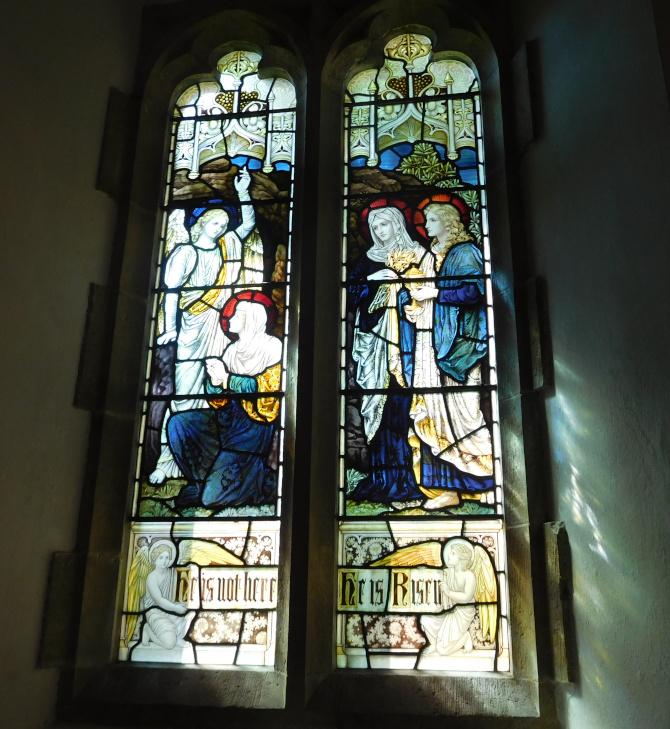
The windows in the North wall of the Nave date from 1915, ‘Charity’ was given by Captain James Creagh Scott of Bepton Grange, in memory of his wife, to match the windows in the South wall.
The others – a ‘Sanctus’ and ‘St. Wilfrid’, were subscribed for by parishioners and made by Whitefriars Glassworks, the celebrated London firm.
Communion Plate
Henry Riggs, who became Rector of Bepton in 1625, was a substantial contributor to the funds of Old St Paul’s in the City of London and was probably instrumental in boosting the response in West Sussex to an appeal by that church in 1634. In recognition of his help, Old St Paul’s presented Bepton with a cup and paten, dated 1625, and bearing the maker’s mark of Walter Shute. The cup was narrow and awkward in shape and, at a later date, ‘Simon Waite and ye Parish gave 2ff to the inlargement (sic) of the Communion Cup’. Cup and paten are now on display in the Treasury of Chichester Cathedral.A list of Rectors from 1401 hangs on the North side of the Tower arch
